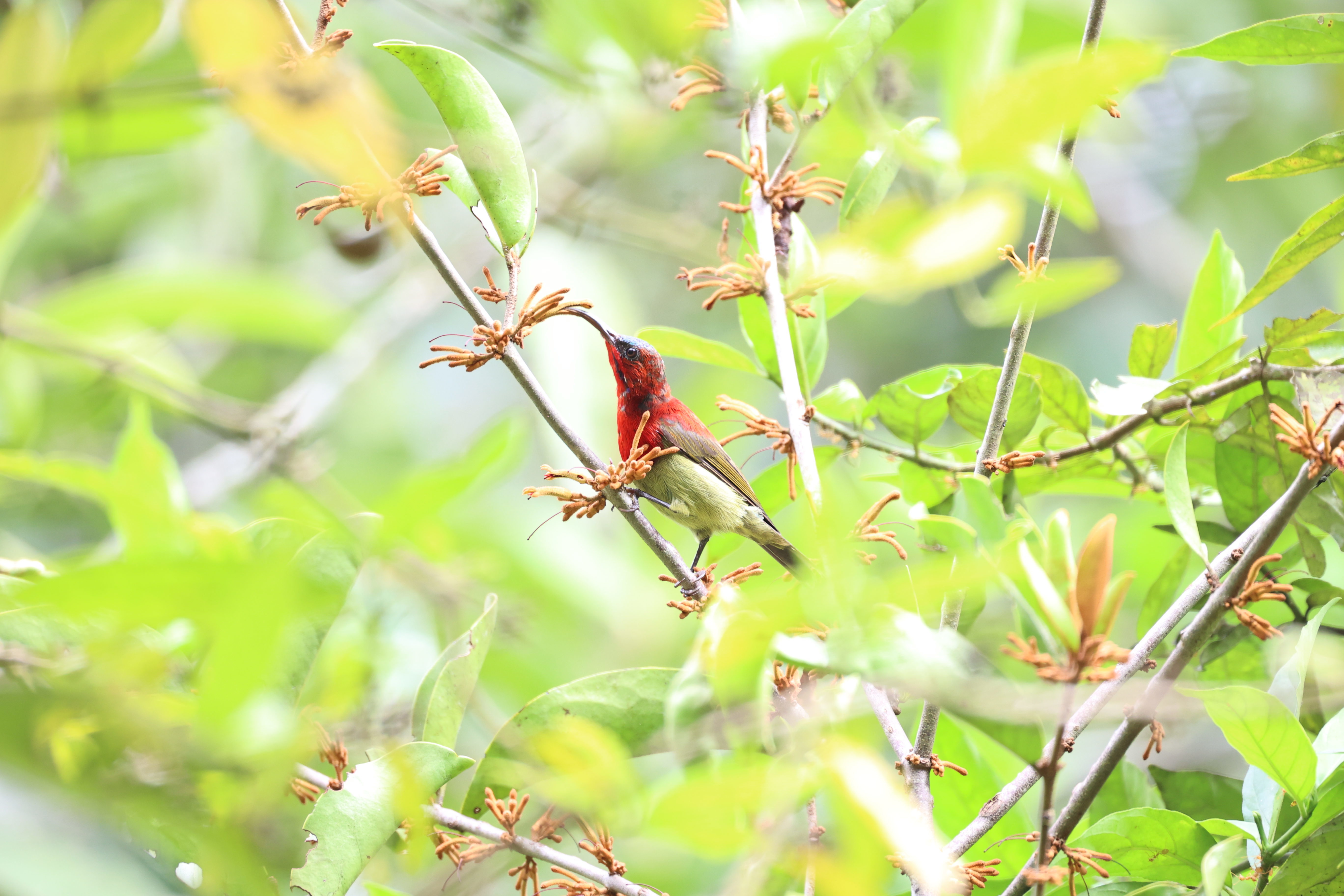Mistletoes, a group of aerial hemiparasitic plants, provide valuable food resources and nest sites for many vertebrates, mostly birds. A previous study reported that Dendrophthoe pentandra, a mistletoe with a broad host-plant range, exhibited an aggregated distribution at a local scale in Xishuangbanna and different seed dispersers had different effects on the initial distribution template of mistletoes. However, its reproduction mechanism still needs further research.
In a study published in Molecular Ecology, researchers from Xishuangbanna Tropical Botanical Garden (XTBG) tried to disentangle factors shaping outcrossing rate and genetic structure of different populations, by combining data on the spatial distribution, the behavior of pollinating birds, and the mating system.
The researchers conducted field observations and experiments at two sites over four years (2011–2014) in Xishuangbanna.
Using microsatellite markers and progeny arrays, the researchers studied how mating system and spatial distribution affect genetic structure in four populations of the host-generalist mistletoe Dendrophthoe pentandra in Xishuangbanna. They also characterized the fine-scale spatial genetic structure among 166 mistletoes from four host trees in one population.
Their hand-pollination experiment indicated that the plant is self-compatible. However, Dendrophthoe pentandra exhibits a high level of outcrossing, despite self-compatibility. Dendrophthoe pentandra is heavily dependent on many birds for pollination and seed dispersal.
They further found that the outcrossing rate was always quite high, despite the variances in infection density (i.e. the number of mistletoe individuals in a host tree; uninfected individuals excluded) and mistletoe density among populations.
“The high-level outcrossing is possibly ensured by the species’ dependence on birds for pollination, its aggregated distribution, and the mixing of genotypes within moderately genetically diverse populations,” said ZHANG Ling of XTBG.
Moreover, spatial genetic structure was associated with distance between host trees but not at shorter scales (within hosts).
“Our results demonstrate that the combination of bird pollination, birdmediated seed dispersal, and post-dispersal processes result in outcrossing and maintain relatively high diversity in the presence of biparental inbreeding, despite very high local densities and possible self-compatibility,” said ZHANG Ling.
Contact
ZHANG Ling Ph.D
Key Laboratory of Tropical Forest Ecology, Xishuangbanna Tropical Botanical Garden, Chinese Academy of Sciences, Mengla, Yunnan 666303, China
E-mail: zhangl@xtbg.org.cn

A sunbird is visiting the mistletoe flowers. (Image by ZHANG Ling)

